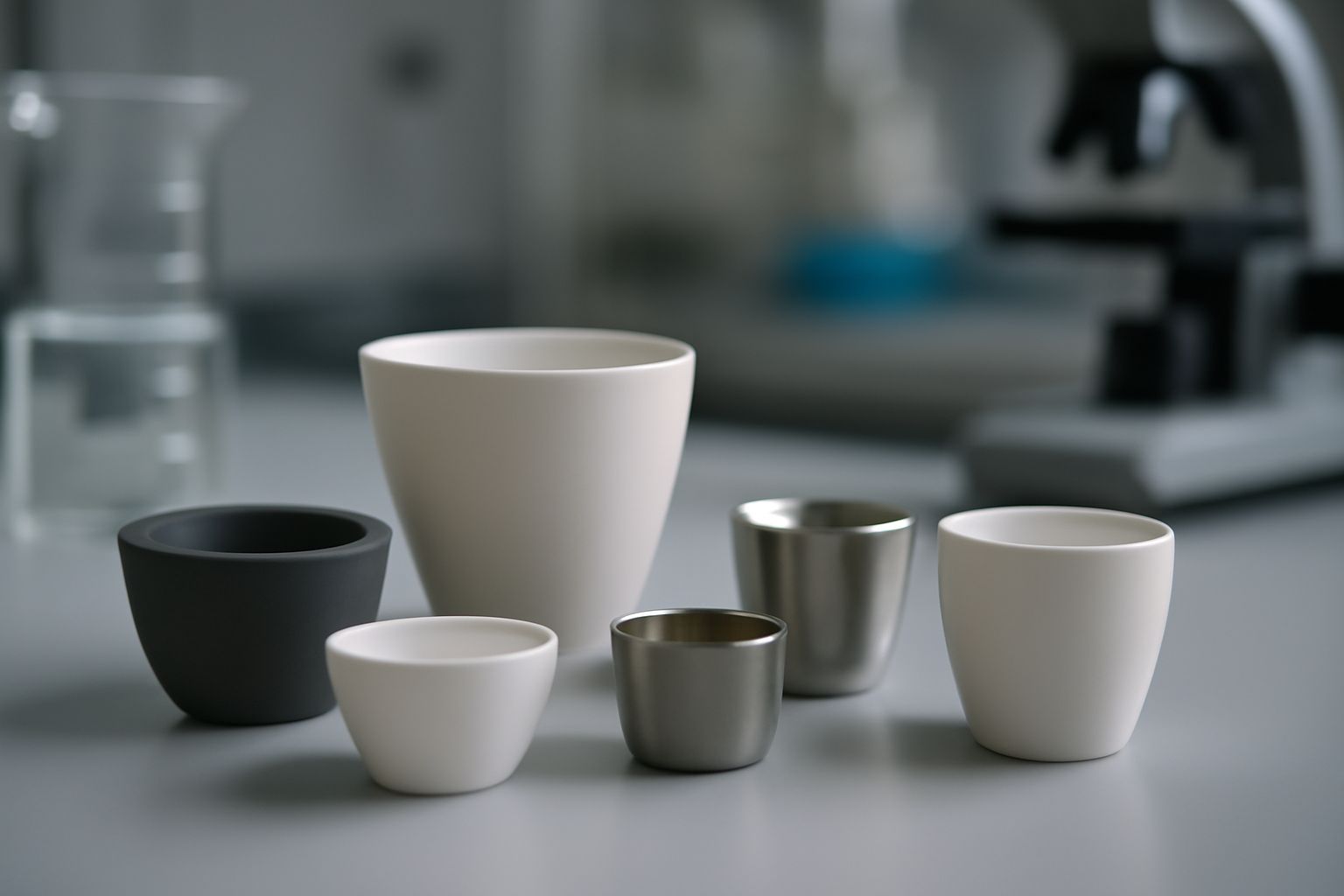Your cart is empty.
shop now
Your cart is empty.
shop now
Material testing becomes unreliable if the tools can’t handle extreme heat or precise measurements. Tiny errors in sample handling can waste valuable time and critical resources.
Laboratory crucibles change modern labs by enabling accurate, high-temperature tests. They deliver stability for experiments that require pure materials and precise measurements, helping many industries achieve reliable and repeatable results.

I have seen the difference a well-chosen crucible makes. Whether in academic work or commercial labs, having the right crucible raises confidence in every result.
Simple containers can’t survive the demands of real research. Low-grade pots often crack, melt, or contaminate samples in testing scenarios.
Laboratory crucibles are special containers made to withstand high temperatures. They handle chemicals and solid samples during heating, fusion, or chemical reactions for accurate material testing.
| Use Scenario | Description | Lab Process Example |
|---|---|---|
| Ashing | Burn organic matter to leave only inorganic residue (ash content) | Quality analysis of raw minerals |
| Melting | Heat metals, glass, or ceramics above 1000℃ | Fusion of metallurgical samples |
| Chemical Reaction | Provide enclosed space for high-heat reactions | Testing corrosion resistance |
| Sample Preparation | Prepare pure or weighed samples for further analysis | Dry or decompose compounds for spectroscopy |
Many reference books describe crucibles as vessels that make high-heat processes practical. In my experience, switching from regular glass to pure alumina containers in thermal tests improved accuracy by over 20%. Testing labs now see crucibles not just as a container, but as a controlled reaction chamber for sensitive experiments.
No two industries work with the same materials or temperature needs. Some labs must measure precious metals while others test complex chemicals or high-purity pharmaceuticals.
Chemistry, metallurgy, and the pharmaceutical industry get the most value from laboratory crucibles due to their thermal resistance, chemical purity, and reliability during sensitive experiments.
| Industry | Main Application | Why Crucibles Are Needed |
|---|---|---|
| Chemistry | Reaction and decomposition studies | Handles acids, bases, and high temps |
| Metallurgy | Melting and refining metals | Supports pure alloy casting (metallurgy info) |
| Pharmaceuticals | Precise measurement of compound purity and behavior | Prevents contamination, supports batch validation |
| Ceramics | Forming, glazing, sintering ceramic materials | Maintains structure above 1000℃ |
| Research Labs | Development of new materials or battery cells | Allows controlled thermal cycling and analysis |
Crucibles are key for everything from small-molecule synthesis to metal alloy production. Industry case studies highlight their use for new battery chemistries. Many reference sources at the materials science level treat the right crucible as a critical tool for breakthrough results. I recommend reviewing protocols in key sectors before selecting a crucible for your own lab.
Many advanced tests need heating far above normal oven range. Glassware shatters or melts, and polymer cups cannot survive these tests.
Crucibles allow researchers to safely heat samples to 1200℃ and beyond, supporting reactions and analyses that other containers cannot manage in high-temperature testing.
| Feature | High-Test Need | Crucible Solution |
|---|---|---|
| Thermal Stability | Experiments above 1000℃ | Materials like alumina and platinum stay solid (alumina info) |
| Low Reactivity | Pure research, trace element studies | Platinum and zirconia crucibles do not contaminate samples |
| Repeat Use | Long-term experiments | Can withstand many cycles without breaking |
| Uniform Heating | Precise measurements and reaction control | Shapes and thickness ensure even sample conditions |
When I work with new high-temperature applications, I pick my crucibles as carefully as my analytical device. High purity alumina and platinum seem expensive at first but pay off with consistent performance. The refractory property is why modern labs rely on these materials, keeping samples safe across repeated, extreme cycles.
Some experiments need basic ceramic crucibles, while others call for rare metals or highly engineered shapes. The best labs match their crucible choice to the test method every time.
Main types of laboratory crucibles include porcelain, alumina, platinum, and graphite variants—each chosen based on temperature, chemical compatibility, and test goals for different applications.
| Material | Maximum Temperature | Best Use | Main Limitation |
|---|---|---|---|
| Porcelain | Up to 1050℃ | Routine ashing, low-temp fusion | May crack if heated too fast |
| Alumina | Up to 1700℃ | High-temperature testing and purity analysis | Brittle if dropped |
| Platinum | Up to 1770℃ | Clean melting, trace analysis (platinum info) | Expensive |
| Graphite | Over 3000℃ | Extreme temperature, reducing atmosphere | Oxidizes in air above 700℃ |
| Quartz | Up to 1250℃ | Optical and clean chemical applications | Not stable for strong bases |
I always select crucibles by balancing test temperature, chemical exposure, and cost. Reading sources and guides like those from ACS, I see more labs now demand purity certification and rapid supply for custom shapes. Picking the right type keeps data trustworthy and equipment protected in every application.